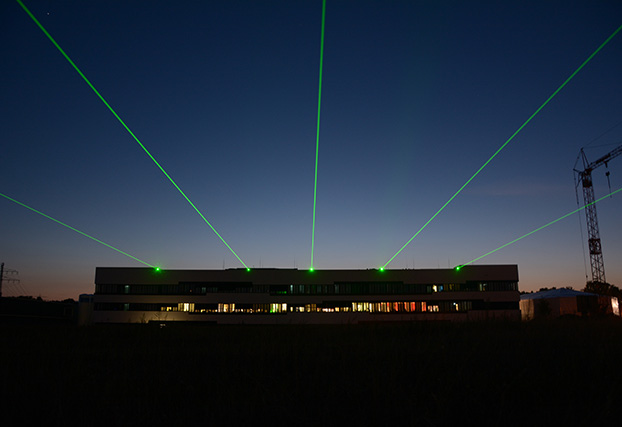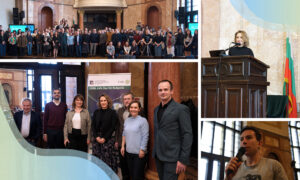
The future is bright as XFEL opens its doors
Newly opened European X-Ray Free-Electron Laser celebrates start of user operations

Today, the European X-Ray Free-Electron Laser Facility (European XFEL) celebrated the inauguration of its X-ray laser and officially opened for researchers.
At a total length of 3.4 kilometres, the European XFEL is the world’s largest X-ray laser. Its light source produces X-ray flashes up to one billion times brighter than other available X-ray sources, offering unique research opportunities in the life sciences, as well as many other fields.
The opening ceremony took place at the XFEL headquarters in Schenefeld near Hamburg. High level ministerial and scientific representatives of the European XFEL’s eleven partner countries, were present. Also in attendance were leading scientists from around the world, including representatives from EMBL, which holds one of its six sites on the nearby Deutsches Elektronen–Synchrotron (DESY) campus in Hamburg.
In the past few years, scientists from EMBL have been highly committed to contribute towards XFEL-based biology infrastructures. The facility is widely regarded as presenting major opportunities for structural biology research. “The European XFEL will enable structural studies of biological complexes far beyond presently reachable limits and will also provide unprecedented opportunities to visualise associated dynamics in very short time frames,” says Matthias Wilmanns, Head of EMBL’s Hamburg Unit. “Several groups at EMBL are already working as part of collaborative projects in anticipation of what XFEL will allow them to achieve.”
The ultrashort laser pulses of its light sources will offer efficient ways to study the moving parts of molecules and chemical reactions as they are happening – that is, removing the need for getting a molecule in solid crystalline form in order to study it. “Amongst a huge array of applications, the facility will also boost studies in the life sciences and will be of great importance to researchers and industry,” adds Silke Schumacher, EMBL’s Director of International Relations. “We very much look forward to continuing our long-lasting and productive working relationship with the European XFEL.”


